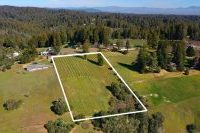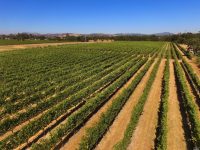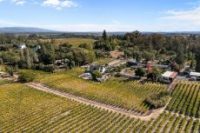There are a few key things you need to keep you eye on growing grapes. It lays out pretty simply here, but the vagaries of the weather and the way these things interract makes it a constant struggle.
Water
The main gas peddle on growing a grape is water and you’ll here a thousand different theories on irrigation from dry farming without any irrigation at all to lots and lots of water to carry large crops. Rule of thumb is about 4 to 6 gallons per wine per week.
Fertilizer
Fertilzer is the next big control of vine vigor. Understanding vine nutrition will help deal with or avoid many potential problems in your vines relating to nutrient difficencies. If you are already a gardner, then what you know about fertilizers will be a big help – if not start learning about NPK.
You can fertilize conventionally or you can fertilize organically, you can put dry fertilizer directly on the plant you can inject it into the drip system. But no matter how you do it, most people fertilize at least a couple times a season. Your local fertilizer supplier will most likely loan you a “bubble” and injection pump when you purchase fertilizer to inject it right into your irrigation system.
Remember, most of fertilizers are controlled, regulated substances and great care should be taken that they are used and stored properly.
Weeds
Weeds are a pain in the ass (I hope there are no children reading this). Chemical herbicides are toxic, dangerous, expensive and have an impact on the soil and the ecosystem that we are still understanding. Hand hoeing is prohibitively expensive and the weeds come right back. Organic farmers are trying a few new alternatives such as flamers and vineager with limited success.
Left unchecked, weeds will consume the available water and nutrients starving your vines yielding symptoms of nutrient difficiencies and water stress even when watering and fertilizing.
Mildew
To the non-grape farmer mildew may seem like an odd subject to cover next, but mildew can take your entire crop. Mildew gets on the surface of the grapes and breaks down their cellular structure essentially destroying the grape. I have one neighbor that lost 50% of his crop to mildew one year (and then he lost 30% to frost 2 years later). The thing with mildew is that you have to keep ahead of it. Once it gets established it is difficult to eradicate. So most of the effort to control mildew is to keep if from ever getting a foothold. So you start early and you repeat regularly (every 10 to 14 days) through the season.
The most commonly used material today for mildew control is sulfur dust. However, no one likes to live next to someone spraying sulfur once a week. But, fortunately there are alternatives, but of course they are all more expensive. Wettable sulfur has similar results without the giant yellow cloud. And there are other organic and conventional treatments for dealing with mildew.
Other Diseases and Pests
There are a host of other diseases and pests that can and do plague grape vines. However, there is no point in going into all of them here. What you need to understand is that you are going to have to rely on someone to first identify diseases and pests in a timely manner and then treat the problem quickly and effectively and in a manner consistent with your farming principles. That’s a lot of responsibility. In addition to the financial consequences of making a mistake, there are all the issues relating to the use of controlled substances that are likely going to be required to treat this problem. Even if you are farming 100% organically and using only 100% organic pesticides, they are still pesticides and not materials to be left lying around or applied incorrectly. The government takes a very dim view of farmers that don’t use and store regulated chemicals correctly.
I don’t want to incite any panic. But it is important to recognize that vineyard ownership brings with it some significant financial risks and some significant social responsibilities. You can hire people to take them on, but in the end the responsibily is eventually yours.
Trellis/Canopy Management
For years the canopy of grape vines was allowed to grow into a jungle. It got so bad that the technique even got a name – the California Sprawl. But in the last 20 years a lot of research has been showing a strong link between sunshine on the clusters and quality wine. So most (if not all ) modern vineyards have a trellis and practice some kind of canopy management. There are variety of systems to choose from – Geneva Double Curtain, Scott-Henry, Smart-Dyson to name a few – but the system you see the most on the North Coast is the VSP or Vertical Shoot Position which is a fancy phrase to describe all the canes of the vines neatly inside wires that cause the canopy to form a vertical curtain of foliage. It is not the most romantic of the systems, but it is the cheapest and the easiest to work with. Typically the canes that are escaping the system are stuffed back in 2 or 3 times in a season and leafs are removed in the area of the fruit to provide more sun exposure.














